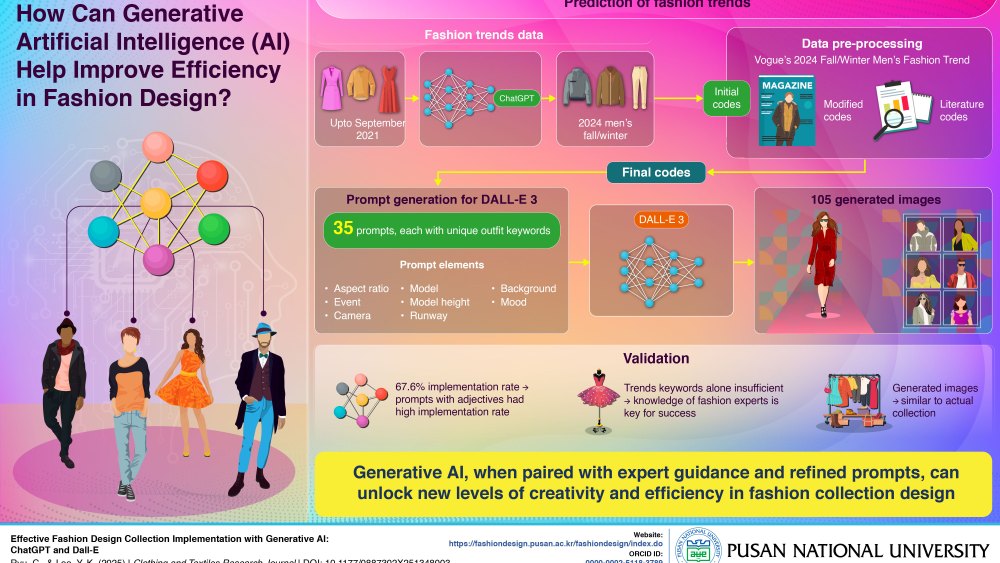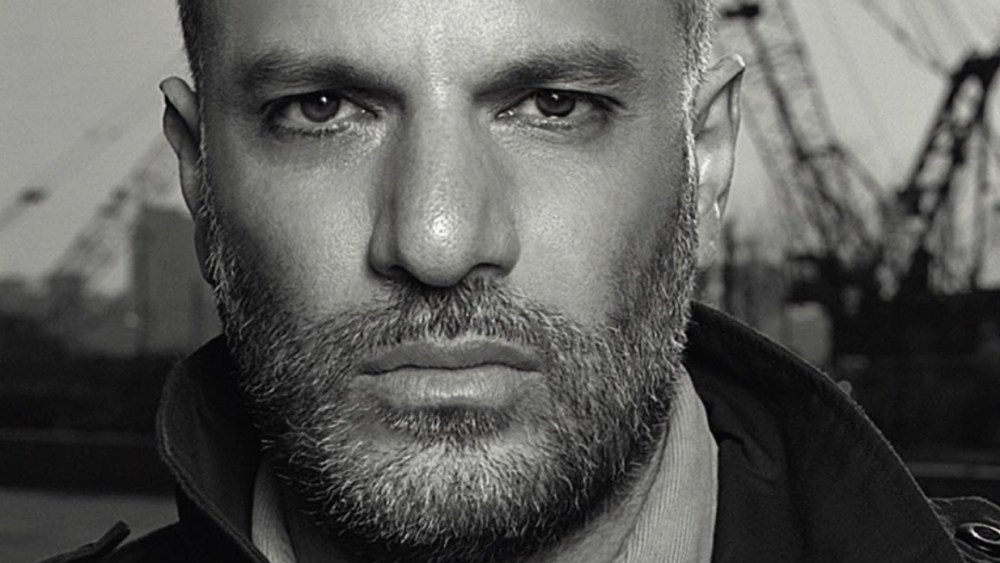
Are we at a point where generative artificial intelligence can predict all fashion trends? Not quite, but an early test showed some eyebrow-raising results.
Generative AI models like ChatGPT and the image generator DALL-E could help improve design efficiency and predict emerging fashion trends, according to a new study by researchers at Pusan National University in Busan, South Korea.
While many designers and other creatives are posing questions to ChatGPT, generative AI has the potential to revolutionize fashion design by pinpointing patterns in data and generating new text and images, according to researchers. They contend that AI models that are powered by deep learning algorithms can help designers develop new catalogs, and expand their creativity, with added efficiency that will help bring products to the market faster.
Professor Yoon Kyung Lee led the study with Chaehi Ryu, a graduate student in the Department of Clothing and Textiles at Pusan National University, to explore how generative AI can contribute to visualizing seasonal fashion trends. But Lee said the results show that “expertly worded prompts are necessary for accurate fashion design implementation of generative AI,” which highlights the important role of fashion experts. Lee has an understanding of the fashion landscape, having previously worked in Milan as a designer for her brand UginiO, which was shown at Seoul Fashion Week and in Paris at one time. With more learning and improvements, generative AI models will help designers create collections more efficiently, she said. That will support their creativity and help “non-experts” to understand fashion trends, Lee added.
Lee and Ryu examined how effective prompt engineering can be when it’s used to generate realistic fashion collection images through AI. Using ChatGPT-3.5 and ChatGPT-4, the researchers first analyzed men’s fashion trends, based on historical data up until September 2021. That analysis was then used with ChatGPT to predict men’s fashion trends for fall 2024. The predicted trends’ design elements were classified as “initial codes,” and design elements from Vogue’s 2024 fall men’s fashion trend data were used as “modified codes.” Thirdly, literature on fashion design concepts was grouped as “codes from literature.” All of the elements were then analyzed and reclassified into six codes — trends, silhouette elements, materials, key items, garment details, and embellishments.
Researchers used those six codes to create 35 prompts for DALL-E 3, OpenAI’s image generator, to describe a unique outfit. The prompts were applied to a template that featured a male model walking down a runway at a 2024 fall fashion show. For added effect, the design of the runway, backdrop, camera angles, models’ appearances and heights, and size of the audience details could be adjusted. Researchers ran each prompt three times and generated a total of 105 images.

OpenAI CEO Sam Altman.
Photo by Tomohiro Ohsumi/Getty Images
DALL-E 3 was able “to perfectly implement the prompts” 67.6 percent of the time, according to the study. (Prompts with adjectives were said to have shown a high implementation rate.) Some of the images in the generated collection were “very similar” to the actual 2024 fall men’s fashion collections, according to researchers. But there were some errors with most of the images looking like ready-to-wear, and DALL-E “struggled” to incorporate trend elements like gender fluidity, according to the study. Lee and Ryu determined that trend keywords alone were insufficient to generate accurate results, and further learning is needed.
However, implementing AI effectively in fashion requires understanding the characteristics of generative AI models and making “informed” decisions about where they can be applied, the study said.
Having studied AI at the Massachusetts Institute of Technology, the fashion designer Norma Kamali said Friday that “AI is great at using data and statistics to create algorithms, which blend nicely into trends.” She added, “Trends are very different from setting a trend, which is an unexpected event that creates a movement in a completely different direction.”
Kamali suggested that AI data that shows a rise in childbirths could potentially lead to new trends in maternity wear for Gen Z mothers. “However, original ideas can best be created by a human with passion, a soul, and feelings,” said Kamali.
Her former professor Abel Sanchez, who is executive director at MIT’s Geospatial Data Center, noted, “When it comes to AI in general, what we’re trying to do is predict the future with the past. When it comes to fashion, we can predict many things, but not everything. That’s a pretty conservative way to look at prediction, because essentially you have to pay attention to what’s being produced, use the guidance that it gives you and double-check it against industry knowledge, experience and other things that might be taking place.”
He compared AI to how Renaissance artists like Leonardo da Vinci worked with apprentices, and at a certain point, they were directing the work and not actually sculpting it with their hands. “It’s still their vision that’s being created, but they’re not moving it directly themselves,” he said.
One of the opportunities that one has with technology is “to navigate the world in a simpler and more personal way,” Sanchez said. Noting how the average person reads 750 books in their lifetime and the number of books that exist are about 130 million, he said, “If you compute that as a percentage, it’s a number that’s nearly zero. The world is demanding more of us and is changing more rapidly, and we can’t possibly adapt. There are many things that we can’t possibly do as humans anymore. One example is the average security flags that the average midsize company gets every day — more than one million. No human can go through all of these.”
There are several things that AI can help people with that overwhelm them at the moment, according to Sanchez, “One of the possibilities is for a simpler life. As opposed to fighting the telecom [company] or whatever institution that has outdated business models and customer service, it provides something that seamlessly integrates into your life. The transformation is going to be big and painful. And it’s going to touch all areas of society. I work at an academic institution, and we’re going to be disrupted in one of the biggest ways. Are we changing anytime soon? We’re not.”
When it comes to fashion and the principles that are at work, it’s no different, Sanchez said. “Our ability to innovate, explore, and create will become simpler. “
While some believe that trend forecasting requires a certain amount of inclination, Sanchez challenged the idea that there is a bit of magic and uniqueness to any of us. Case in point, he said, consider password replication, which has led to millions of compromised passwords.
Sanchez acknowledged how some companies are using digital avatars to try to understand how people respond to products and others are using digital versions of models in advertising. “One of the challenges is that certain industries are more resistant, and creative communities are one of the most resistant to change. If I think about writers, the movie industry, although that’s changing, there’s that sense that AI is the enemy.”
Making the point that art didn’t disappear after the onset of photography, he said that in terms of fashion and AI, “That technology is here. We need to get over many of the pre-conceived ideas and biases that we have towards technology. It will take us a little bit longer. But part of it will be a matter of who innovates and who brings in those new artifacts that allow us to use these technologies in a nonthreatening way?”
#Generative #Predict #Fashion #Trends #Boost #Design #Efficiency






